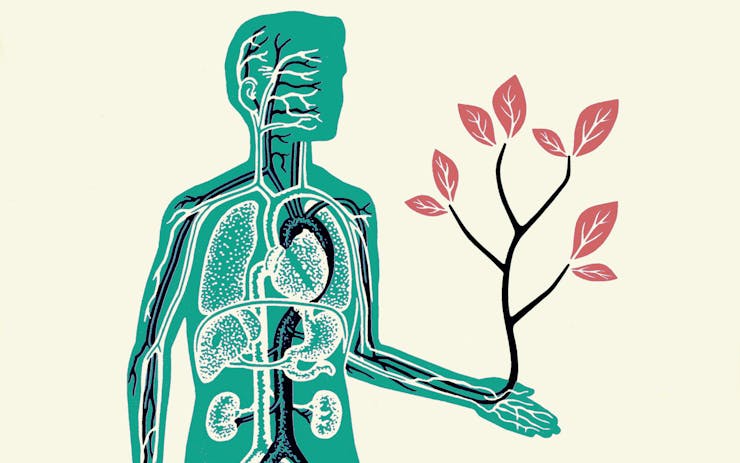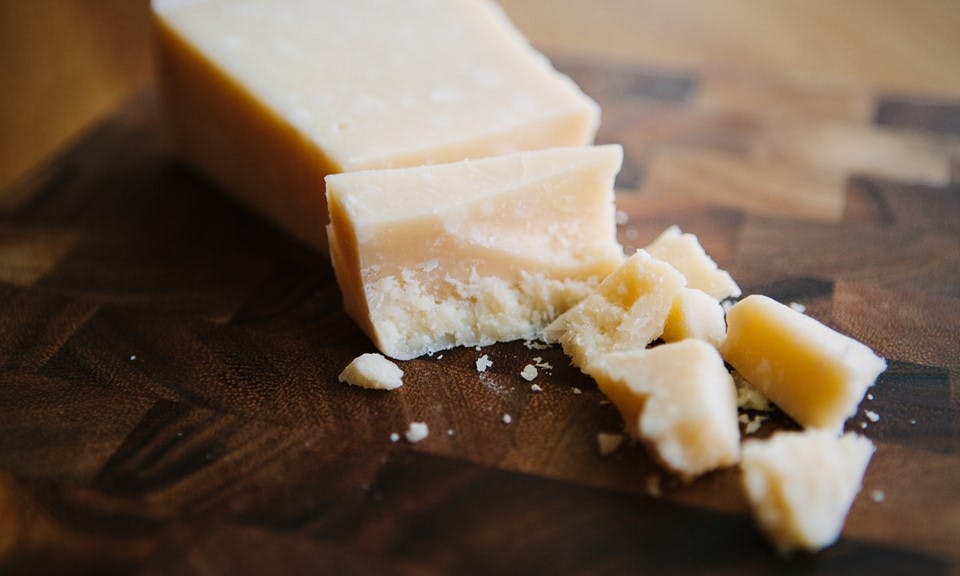Like many small, post-colonial states, the Republic of Vanuatu, a Pacific archipelago comprising dozens of small islands, sees some economic boosts from being a tourist destination, tax haven, and “flag of convenience,” but it experiences some drawbacks, too. The remote nation’s residents, known as Ni-Vanuatu, frequently face unemployment and poverty, relying heavily on personal fishing and farming for sustenance and often earning money for food and other supplies through homegrown exports like kava and copra.
As the region’s historyindicates, Vanuatu also has a perfect climate for growing cannabis.

Vanuatu is a Pacific nation consisting of about 80 islands located east of Australia. (Elysse Feigenblatt/Leafly)
Now that officials have sought to legalize the plant for medical use, Vanuatu will soon join a growing number of smaller, tropical nations to host clinical trials on how cannabidiol (CBD), a naturally occurring chemical in cannabis, may replace or supplement pricier pharmaceutical medication. In Vanuatu’s case, the trials aim to determine whether CBD can help treat diabetes complications—or even stop the disease in its tracks.
“This really is a tool the country can use to treat their people, and we can use the scientific data behind it.”
Not only do the trials hope to uncover new treatments for diabetes, which affects more than 1 in 8 Vanuatu residents. The study also hopes to establish an alternative for expensive, imported pharmaceuticals that can be difficult or impossible to afford.
Next year, Denver-based CBD producer Phoenix Life Sciences International plans to conduct a series of short-term studies with Vanuatu patients using US-imported CBD as a diabetes treatment, beginning with a 1,000-person trial at the country’s main hospital. While the cannabis will be imported at first, Phoenix is also on track to break ground in 2019 on its international cannabis-production hub and 50 acres of growing land on a former military base in Vanuatu, a site now reportedly being “readied” by goats.
Among Vanuatu’s nearly 270,000 inhabitants, the diabetes rate has risen to an estimated 13%, making it one of the country’s biggest ongoing medical threats. According to Dr. Philip Blair, diabetes director for Phoenix Life’s medical advisory council, the studies will provide “a great opportunity” to investigate the relationship between diet and lifestyle, diabetes, and medicines like insulin and CBD. If all goes well, the project could cut the cost of diabetes care considerably.
“In Vanuatu, we’ll be using a comprehensive program meant to change the trajectory of patients’ illness and their future,” Blair said in a phone interview. “That includes aspects relating to diet, exercise, sleep, and social activity as well as CBD, in order to help improve patients’ condition and plight and change the direction of their lives.”
CBD: A Key to Balancing the Endocannabinoid System
One big reason that CBD is treated as such a potentially versatile health tool is its ability to stimulate the endocannabinoid system, which maintains balance and function in the body. Sometimes, this system itself can get out of whack, and introducing phytocannabinoids through cannabis-derived CBD or various other plants can help the body tip the system back into balance. It’s this property that provides the real-life rationale behind CBD’s “miracle drug” hype.
In the past four years, Blair said he’s used CBD to treat “a wide variety of conditions” in his US patients and heard all sorts of positive feedback. “Many people report that it turns back their clock 10 years, that they are more youthful in their attitudes and approaches, engage in more socialization and interaction, have better-quality hair and skin,” he said. “They also like the analgesia it offers for daily aches and pains.”
Blair, an Army-trained physician who’s specialized in kidney disease and disease management, said cannabinoids can play a crucial role in helping the body recover from dangerous conditions that occur with diabetes, along with other diseases he’s treated. After first recognizing CBD’s therapeutic potential several years ago, he’s been studying the effects ever since.
“Kidney failure is often related to diabetes, so I wanted to figure out exactly what was going on and how to correct it,” Blair said. By working with dietitians, he learned that a balanced diet low in carbohydrates can be effective for managing diabetes, sometimes even reversing Type II diabetes. “But it wasn’t really enough,” he said. “Patients will progress in the disease or aren’t willing to make changes to stop the progression.”
Vanuatu is “a perfect example” of a trend occurring in numerous developing countries, Blair said. “People are eating more and more Western foods, made with processed sugar and flour, rather than staying on the native diets that kept them healthy. It’s leading to more epidemics of obesity and, correspondingly, diabetes.” There are other diseases that go along with that, he said, such as cancer, kidney failure, and dementia—all of which Blair said he’s seen improve significantly with cannabinoid treatment.
When Blair first turned to non-intoxicating CBD because of its anti-inflammatory properties, he found that his patients showed “significant improvements” in blood glucose and liver function. Continuing his observations, he found the benefits didn’t end there. “I saw a gentleman who’d had diabetes for over 10 years, with extensive neuropathy, and after starting to use CBD, he said he could feel the grass beneath his feet for the first time in years.” Other patients were able to reduce their insulin use or stop insulin entirely.
“It’s a really smart molecule. I call it a Boy Scout, because it’s always doing the right thing.”
“What we see with CBD’s effect on abnormal metabolism—having been shifted to abnormal by a disease state—is that it can modulate and regulate these metabolic changes going on inside the body,” he said.
CBD can help the body deal with the effects of a blood-sugar imbalance, Blair said, not only by stimulating the endocannabinoid system but also by modulating hormones in the body. It helps release cortisol, for example, which promotes fat release from cells, shifts glucose levels for more efficient use in the body, and pushes a patient’s lipid profile in a positive direction.
CBD works to promote insulin production, too, and may reduce insulin resistance. “Also, its effects on the cell are really quite amazing,” Blair said. First, CBD helps reduce inflammatory molecules caused by imbalanced blood-glucose levels. “Glucose actually has quite an inflammatory effect,” he said.
Second, CBD changes how the body breaks down sugar, supplanting glycolysis—the body’s breakdown of glucose with enzymes—with a “productive formation [that] actually helps promote production of glutathione,” which Blair called “one of the more phenomenal detoxifying and anti-inflammatory agents in the body.”
“It’s a really smart molecule. I call it a Boy Scout, because it’s always doing the right thing,” Blair said of CBD. “It’s very adaptive to providing normal function and getting people back to normal.”
“I don’t think of it as a drug so much as a vitamin,” he added. “It’s a signaling property.”
Endocannabinoid signaling happens naturally throughout the body as various substances trigger it to support various tasks. “One of the classic examples is breastmilk: It signals the system to help balance, restore, and improve neurological development in a child,” Blair explained.
Other endocannabinoid edibles include turmeric, echinacea, and (real) chocolate—substances with great historical and biochemical value that nevertheless are generally lacking in Western diets. Such dietary deficiencies have increasingly been considered a major cause of diabetes, starting right here in the US.
“The drugs and methods we’re using now haven’t been able to stem the tide of diabetes within the country,” Blair said. “Fifty years ago, the government changed its recommendation for a healthy diet, and reduced fat but increased the amount of carbs. This was a distortion of physiology—fat is essential for our development, our satisfaction, and our mental health—and has created the obesity and diabetic epidemic we’re in right now.”
Can CBD Revolutionize Diabetes Care?
The science behind CBD—or cannabinoids generally—as it relates to diabetes isn’t exactly settled. Like most clinical research areas around medical cannabis, it’s an active, changing field. One recent study found that cannabis use could actually increase the risk of complications related to Type I diabetes. And as Westword pointed out in late October, available data suggest that CBD “may only be part of the diabetes solution.” Other cannabinoids could also play important roles.
CBD’s use in the treatment of diabetes is promising, [but] adding THCV — another cannabinoid with both psychoactive and medical effects — may be even more effective, according to studies. A 2012 study funded by the National Institute of Alcohol Abuse and Alcoholism found that CBD and THCV “have tremendous therapeutic potential” in treating diabetes, but called for more research into medical products made from the cannabinoids. The American Journal of Medicine published a study in 2013 that showed current cannabis users (consuming not just CBD, but all the cannabinoids in the plant) had lower insulin levels and smaller waist circumferences than those who didn’t use the plant, while a 2016 study done for the American Diabetes Association found THCV, not CBD, showed promise in reducing blood glucose levels.
Phoenix Life’s hemp-derived products currently contain only CBD. Federal drug laws in the US prevent the company from adding THCV to the mix. But as the company begins cannabis cultivation in Vanuatu and other international locations, CEO Martin Tindall says products will include other cannabinoids to take advantage of “the whole-plant entourage effect.”
“This way,” he said, “you won’t have thousands of patients dying while they’re waiting for approval of something we already know is safe and efficacious.”
In Vanuatu currently, Tindall said, diabetes combined with a lack of affordable, effective treatment currently costs the population one amputated foot per day. One of Phoenix Life’s primary goals, he explained, is to cut the cost of global diabetes care by as much as two-thirds, starting in developing nations that need it most.
“Vanuatu doesn’t have the money to treat its diabetes population, or its cervical cancer population,” Tindall said. “This really is a tool the country can use to treat their people, and we can use the scientific data behind it.”
Tindall estimates that the price of producing an acre of cannabis in Vanuatu will be $10,000, a small fraction of the roughly $3 million to $8 million it would cost in in US or Canadian greenhouses. All told, the cost to developing nations’ government health systems is estimated to run about $20 per patient per month.
In the US, meanwhile, the only federally approved cannabis-derived drug—a purified CBD product used to treat seizures—is estimated to cost more than a hundred times that: $2,708 per month.
On top of that, Phoenix Life hopes to provide on-site agricultural training and pay local workers 50% more than the country’s minimum wage (about $2 per day), though details are still being worked out.
In setting up the program designed to undercut traditional pharmaceuticals, Phoenix Life borrowed a play from the pharmaceutical industry itself, Tindall explained.
“Drug companies have the choice to make as much money as possible and convince the world it’s the right price,” he said. “But the majority don’t manufacture in the ‘first world.’ They do so in the developing world, in places with a lower total cost of labor and other strategic benefits. So we [adapted] that model.”
The model could help push down costs in more developed nations, too. The cost for a country such as the UK, for example, would be closer to €150 per patient per month, Tindall said, or an estimated one-third the cost of a UK diabetes patient’s monthly insulin at today’s prices.
According to Tindall, 50 acres of cannabis plants at the company’s self-powered facility could help treat as many as a million diabetics, including hundreds of thousands in the South Pacific, and generate $250 million in potential revenue.
Tindall also sees an opportunity to give back to Vanuatu, noting that a large portion of the company’s profits are being earmarked fund development and social services in Vanuatu. It’s a move he hopes will inspire other cannabis businesses to follow suit. “There are tons of cannabis millionaires now, and a handful of cannabis billionaires,” he said. “What we all need to do is rally behind these social causes. It’s the least we can do.”
Tindall said that while he originally thought medical cannabis “was an excuse to get high,” stories of patient success—and his father’s experience with chemotherapy—helped change his mind.
Through the Vanuatu study, he said, “We’ll be gathering a lot of information observationally to find out what response we’re getting, and learn much more about how these measures can improve lives, from whatever nation they are.”







